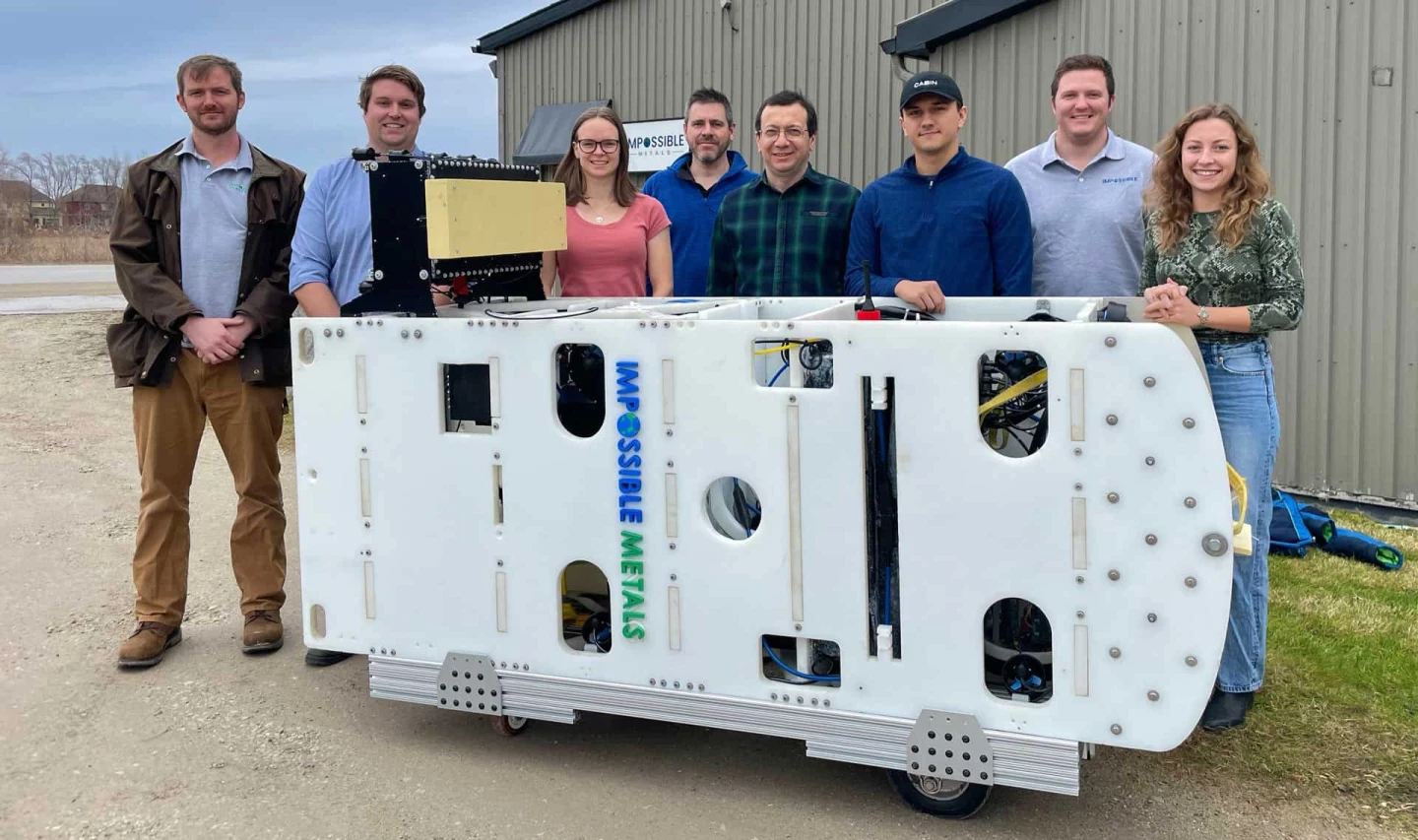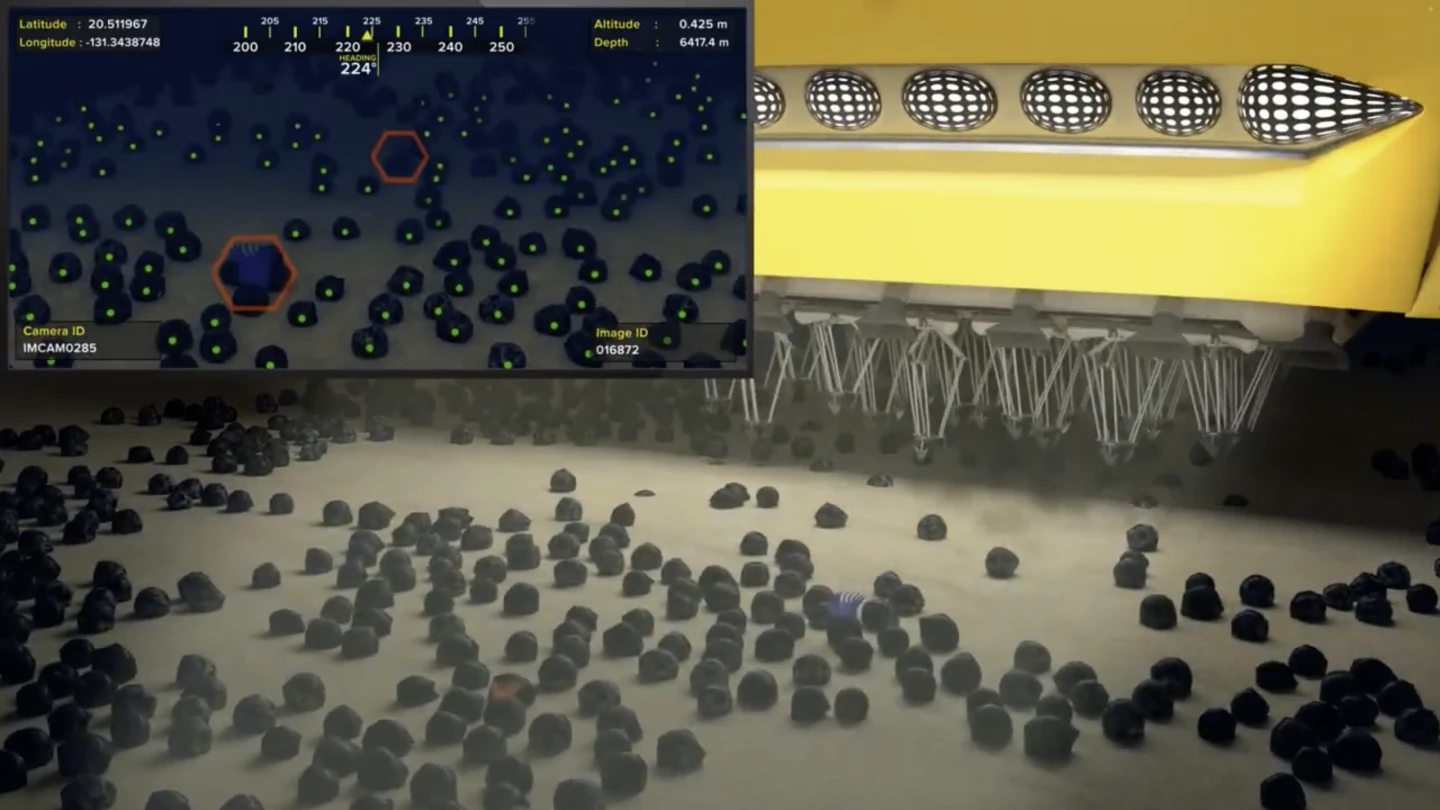We've known for decades that billions of dollars' worth of battery-relevant metals like copper, manganese, cobalt and nickel are literally sitting around on the seafloor out in the deep ocean, in giant fields of "polymetallic nodules" that look just like rocks, no bigger than potatoes. These nodules are believed to be formed by a number of the slowest geological processes known to science, including the precipitation of metals out of seawater in the presence of high oxygen levels. Researchers estimate it takes several million years for a nodule to grow by a single centimeter.
Humanity badly needs those metals as we try to steer the ocean liner of modern civilization away from fossil fuels to cleaner forms of energy that give us a better chance of long-term survival. Terrestrial resources are starting to look strained and problematic, and while it's possible to recycle metals in a closed-loop system, the green shift in the coming decades will demand mountains of new materials. There are many companies developing plans for seabed mining, arguing that picking up these rocks is a better way of feeding the decarbonization beast than scarring the surface any further.
But mining these deep-sea metallic spuds is not just technically difficult, it's extremely controversial. The sea floor is a gigantic biome, one of very few on the planet that remains largely untouched by humankind. Early proposals for seafloor mining tended to involve dredging or vacuuming the area, sucking up the rocks along with everything else into machines the size of combine harvesters, then spitting anything that wasn't metal out the back as a plume of sediment.

This kind of approach was tested in 1989 for its environmental impacts. The DISCOL experiment raked clear an 8-meter-wide (26.2-ft) channel in the middle of an 11-sq-km (4.2-sq-mi) patch of the Pacific ocean. Life in that piece of seabed has never recovered, and the test also revealed that the sediment kicked up by a dredge-like machine will settle back on the seafloor and smother marine life in a potentially enormous radius stretching thousands of miles around the mining zone.
So seabed mining, if done irresponsibly, is almost certain to be a mass extinction event for countless species as yet unknown to science. Even if it's done without dredging, it'll be fatal to species who make polymetallic nodules their homes.
To be fair, the nascent seabed mining industry has shown far more consideration of these environmental effects than any industry before it. Under the stewardship of the UN's International Seabed Authority (ISA), which is charged both with protecting and exploiting the seafloor, there have been a handful of exploration licenses granted, and no commercial mining permits as yet.

Impossible Metals is one company trying to find ways to harvest polymetallic sea spuds with the minimal possible impact on the surrounding biome. This North American company has developed a robotic picker-upperer that floats along near the sea bed without actually rolling on it, searching for the right kinds of nodules with camera vision, using AI to determine which ones have signs of visible life on board, leaving those alone and carefully yoinking the rest off the surface with little claw grabbers.
It's designed to operate at depths below 5 km (3.1 miles), deploying from a ship at the surface and sinking until it's right above the seabed. Once it's full of nodules, it'll use a custom-designed buoyancy engine to return to the surface and drop them off.
Unlike dredge-style operations that would strip-mine the seafloor, pumping product up to the surface, these robots would pop up and down visiting different spots each time. The process would be vastly slower but, on the other hand, Impossible can simply deploy more and more robots to increase yield.

The company has now demonstrated a proof of concept, by testing a fridge-sized Eureka 1 autonomous underwater vehicle prototype at a depth around 25 m (82 ft). It identified and grabbed relevant rocks, and brought them up to the surface.
Impossible Metals plans to have its robots developed and ready for large scale deployment by 2026, although any actual mining operation would presumably be contingent upon ISA approval. This kind of mining will unavoidably disturb the deep-sea ecosystem and kill some marine life, but it's hard to imagine how you could get these metals to the surface in a more careful and responsible way than this. And at the end of the day, humanity might have to accept some consequences on the seabed if it wants to keep the surface or the oceans habitable.
Check out the Eureka 1 prototype in action in the video below.
Source: Impossible Metals









